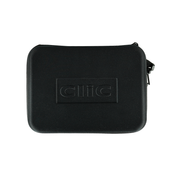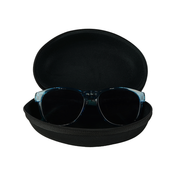When you think of whether or not you need reading glasses, think of how you evaluate needing sunglasses. They’re ideal for specific scenarios, helping you see more clearly. Reading glasses can help you read fine text, you simply need to identify when you need them?
Continue reading to learn more about reading glasses, including how to test if you need a pair.
What Are Reading Glasses?
Reading glasses, or readers, are ready-made glasses that magnify your vision, helping you more easily see close-up words and images. Readers aren’t like your regular glasses. You typically use them in smaller bursts, such as when reading or working on a close-up task.
Someone needs reading glasses when they develop presbyopia.
What Is Presbyopia?
Presbyopia is a condition causing your eyes to lose their ability to focus on nearby objects. It’s a natural part of the aging process, typically beginning around the time you turn 40. You may notice it’s harder to read books, labels, or recipes than usual.
Presbyopia occurs when the eye’s lens begins to change with time. The lens flexes and changes shape to help you focus when reading and looking at close-up images. However, the lens hardens and becomes less flexible as you get older.
Your lens struggles to change shape when you have presbyopia, making close-up images appear blurry. While this condition isn’t curable, you can experience clear vision with a pair of reading glasses. Because presbyopia can gradually progress, how do you know if you need reading glasses?
How Do You Know if You Need Reading Glasses?
When presbyopia begins to develop, there are several warning signs. You may not notice these changes right away, but they will become more noticeable with time.
If you’re thinking it might be time for reading glasses, here are some signs to watch out for:
- Books & other reading material look blurry up close, making you have to hold them further away to read
- You struggle to see smaller print in dim light
- Your eyes hurt when you try to read, or complete close-up tasks
- You get a headache when you try to read
If you experience these symptoms, it’s likely time to get some readers.
How to Test Your Reading Glasses Prescription

Once you know you need reading glasses, you must identify your prescription. There are several ways to test your reading glasses prescription, including reading charts, testing your glasses yourself, and speaking with your optometrist.
When determining what lens power you need, it’s important to note that presbyopia is a progressive condition. It tends to develop after age 40 and stabilize when you enter your 60s. Your prescription may change several times during this period, so don’t be surprised if you need to replace your glasses.
Use a Reading Test Chart
A diopter chart is a handy tool for testing what reading power you need for your glasses. They feature several lines of text, increasing in size for each row. Many online retailers feature a reading chart on their website for easy testing.
Make sure you remove your glasses when reading the lines on the chart for greater accuracy. You may struggle to see the first line on the chart, so simply move down the rows until you’re feeling comfortable.
Following these steps when completing your lens power test:
- Hold your chart or stand 12 to 14 inches away without wearing your glasses
- Read the sentences from the top down
- Once you can read a sentence clearly, this is your lens strength
These charts typically feature the associated strength to the side of each row to make it easier to identify your lens power. Once you determine your lens strength, you’re good to go!
Test Different Lens Powers Yourself
If you want to go the “try and fail” route, you can visit a retailer in-person and try on different glasses. The prescription of reading glasses typically increases by 0.25 diopters (+1.00, +1.25, +1.50, and so on), so continue trying on glasses until you find your ideal match.
Don’t settle on the first pair of glasses offering semi-clear vision. Try on multiple pairs featuring stronger and weaker prescriptions until you feel confident in your decision. The wrong prescription can lead to headaches and eye strain.
Speak with Your Optometrist
 If you want a definitive result for your glasses prescription, visit your eye doctor. They can conduct an eye exam to help assess your prescription and how strong it needs to be. After providing your prescription, you can order your reading glasses from your ideal retailer.
If you want a definitive result for your glasses prescription, visit your eye doctor. They can conduct an eye exam to help assess your prescription and how strong it needs to be. After providing your prescription, you can order your reading glasses from your ideal retailer.Is It Time to Order a Pair of Readers?
With the right prescription, reading glasses can make close-up work easier. There are many options for readers, so ensure you buy them from a trustworthy and professional supplier.
Educational Resources (by topic or phrase): Presbyopia, presbyopia is a progressive condition, lens, here are some signs to watch out for, diopter





